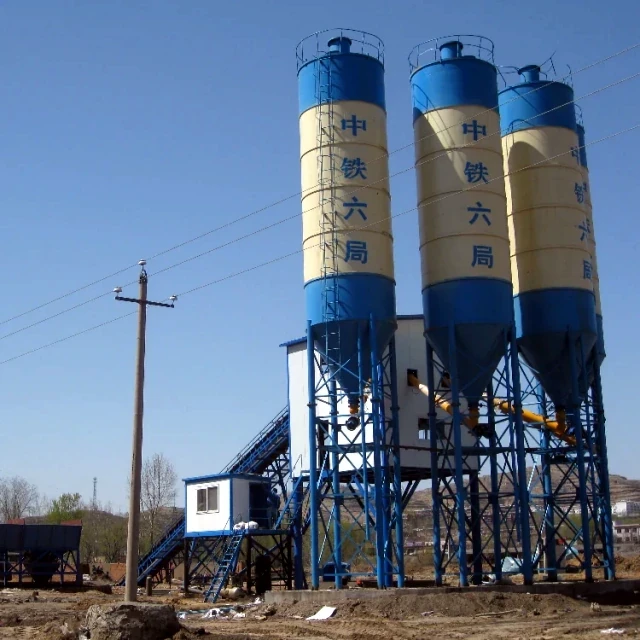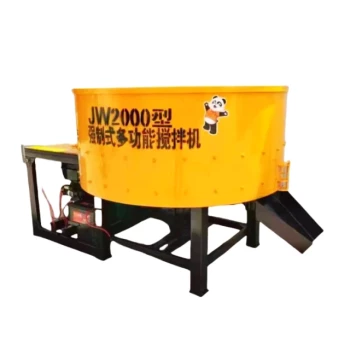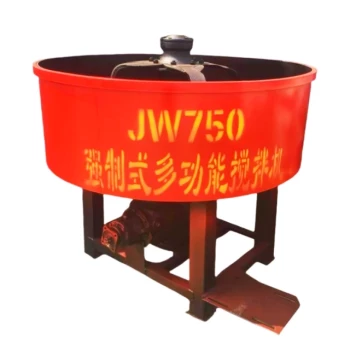Introduction
Concrete mixing stations are the backbone of modern construction, but their performance hinges on optimizing critical components. Whether you're managing infrastructure projects or industrial-scale concrete production, understanding the interplay between mixing hosts, material handling systems, and control technologies can dramatically improve output quality and operational efficiency. This guide breaks down the core systems, their optimization strategies, and real-world applications—helping you achieve consistent, high-volume concrete production.
Core Systems in Concrete Mixing Stations
Mixing Host: The Heart of Concrete Production
The mixing host determines the quality and consistency of your concrete. Twin-shaft mixers, for instance, outperform planetary mixers in large-scale applications due to their dual horizontal shafts rotating in opposite directions. This design ensures:
- Faster mixing cycles (ideal for time-sensitive projects like bridges or dams)
- Thorough blending of stiff or high-strength mixes
- Lower energy consumption per batch compared to single-shaft systems
Ever wondered why some mixing stations struggle with uneven concrete? Inadequate blade design or worn components in the host often cause this.
Precision in Motion: Material Weighing and Conveying Systems
Accuracy in material batching is non-negotiable. Modern weighing systems leverage:
- Load cells and automated controls to reduce human error
- High-speed conveyors synchronized with mixing cycles
- Moisture sensors to adjust water content dynamically
A single 5% deviation in aggregate weight can compromise concrete strength by up to 15%.
Storage and Control: Ensuring Consistency at Scale
- Silo management: Segregate materials by type and moisture sensitivity.
- Automated dispatch systems: Track batch data to prevent cross-contamination.
- Remote monitoring: Real-time alerts for mixer torque anomalies or temperature fluctuations.
Visual metaphor: Think of these systems as a symphony conductor—each instrument (component) must play in perfect harmony.
Strategic Integration and Industry Applications
Synergy Between Systems for Maximum Output
Optimization isn’t just about individual parts; it’s about how they interact:
- Synchronized workflows: Align mixer cycles with conveyor speeds to minimize idle time.
- Data-driven adjustments: Use historical batch data to fine-tune recipes.
- Preventive maintenance: Schedule downtime based on mixer motor performance metrics.
Case Studies: Successful Deployments in Infrastructure Projects
- Bridge construction: A project in [Region] reduced mixing time by 22% using twin-shaft mixers, meeting tight deadlines without sacrificing concrete strength.
- Dam repairs: Integrated moisture control systems eliminated curing cracks in 10,000+ cubic meters of high-density concrete.
Conclusion and Actionable Insights
To elevate your mixing station’s performance:
- Prioritize twin-shaft mixers for heavy-duty applications.
- Calibrate weighing systems monthly to maintain ISO standards.
- Invest in smart controls—tools like Garlway’s winch systems can automate material handling, reducing labor costs.
By focusing on these levers, you’ll transform your mixing station from a cost center to a competitive advantage.
Products You Might Be Looking For:
Explore high-capacity concrete batching plants
Related Products
- JZC500 Large Cement Mixer Machine Price for Concrete Mix
- HZS90 Large Multiquip Concrete Mixers for Construction
- JZC1000 Industrial Concrete Mixer Machine Cement Mixer Price
- Commercial Electric Concrete Mixer Machine HZS 50 Small Batch Plant for Sale
- HZS35 Small Cement Concrete Mixing Batch Plant
Related Articles
- How Large Concrete Mixing Stations Power Mega Projects and Modern Construction
- How to Prevent Cement Silo Degradation: 3 Proven Strategies for Uninterrupted Production
- How to Prevent Cement Silo Air Path Failures Through Smart Filter Maintenance
- How to Install Cement Silos Safely: 3 Critical Phases for Compliance and Durability
- How to Minimize Downtime and Maximize Efficiency in Commercial Concrete Mixing




















